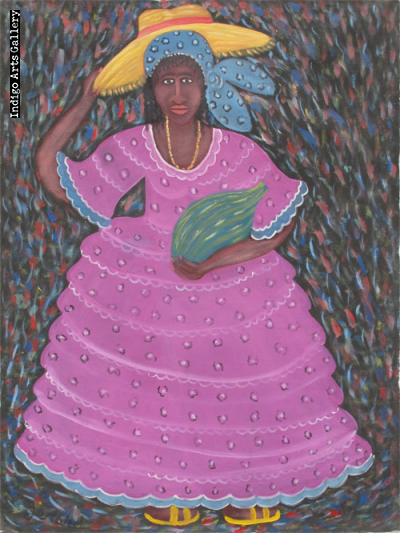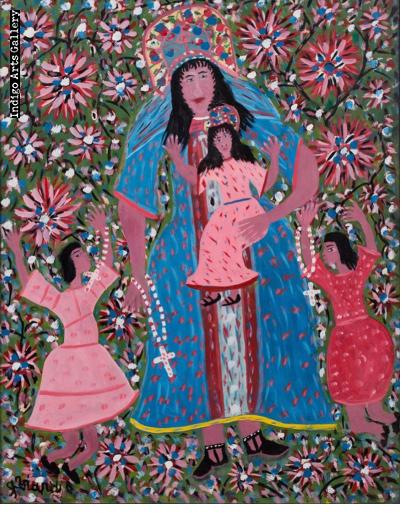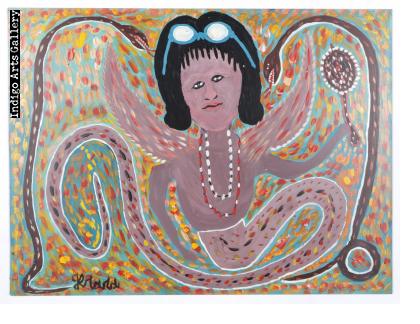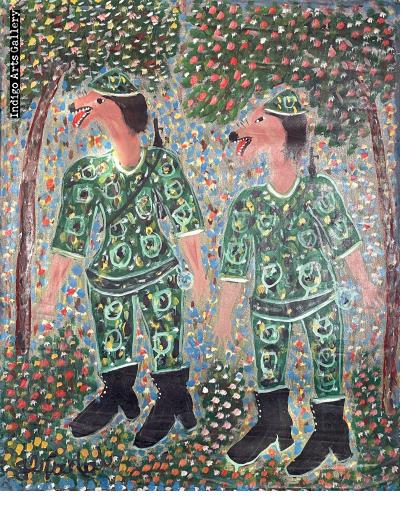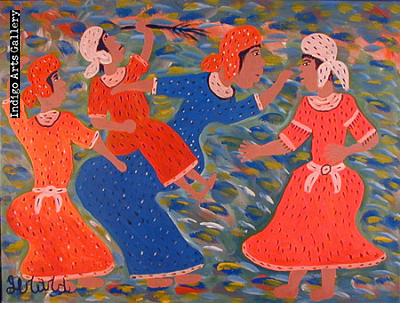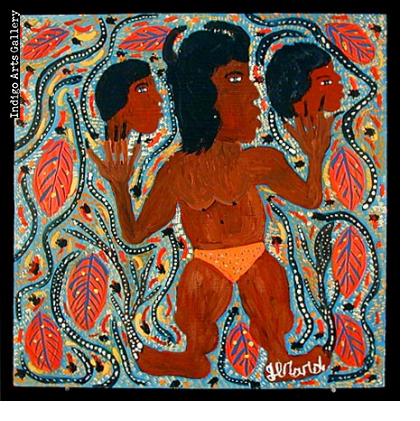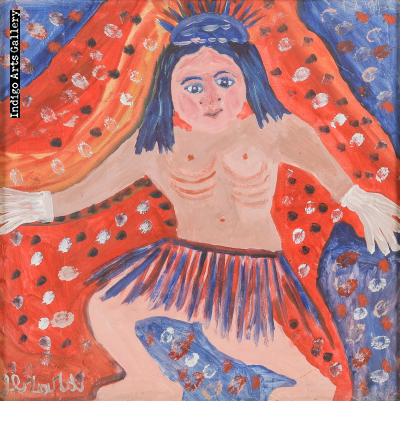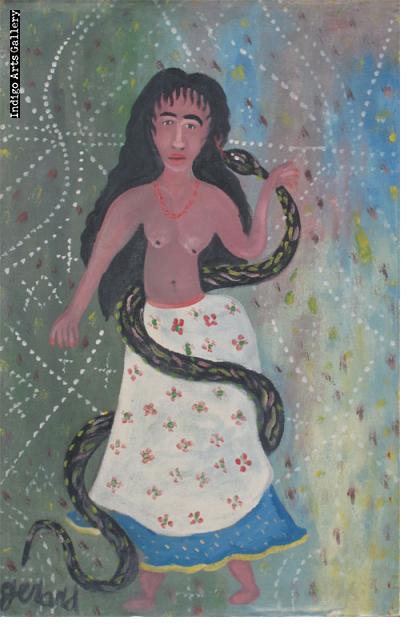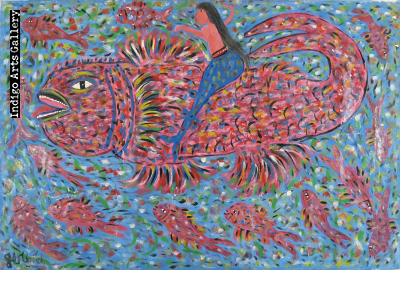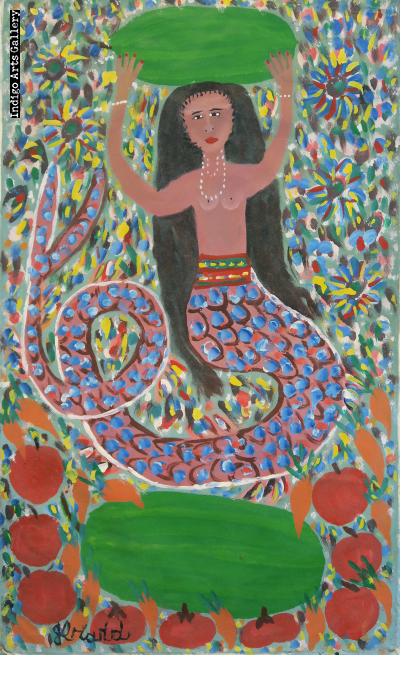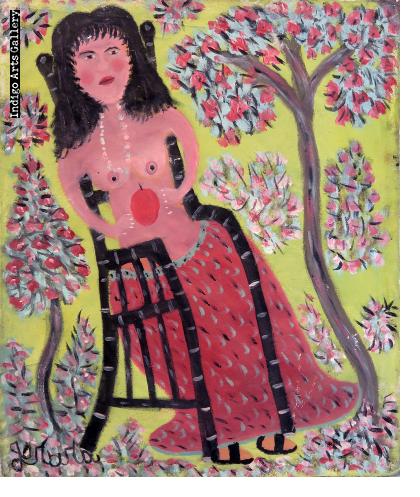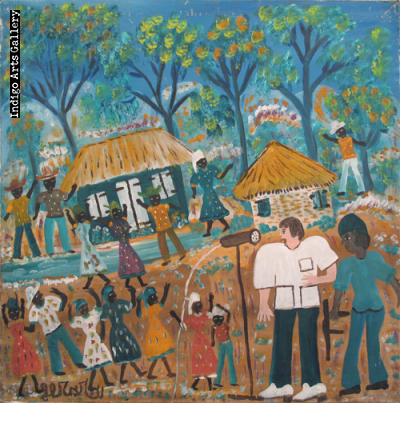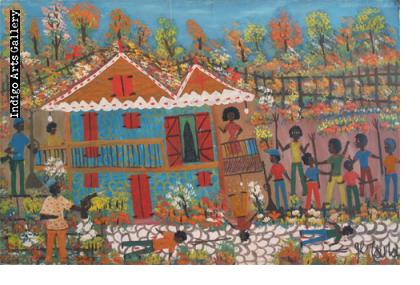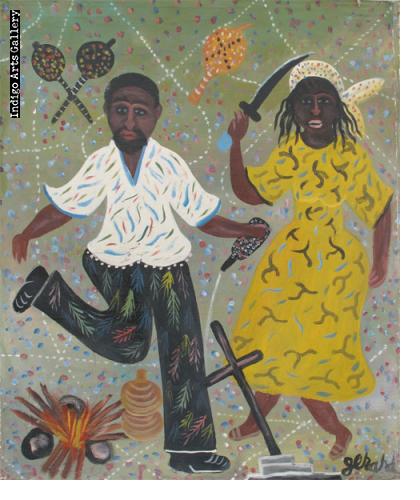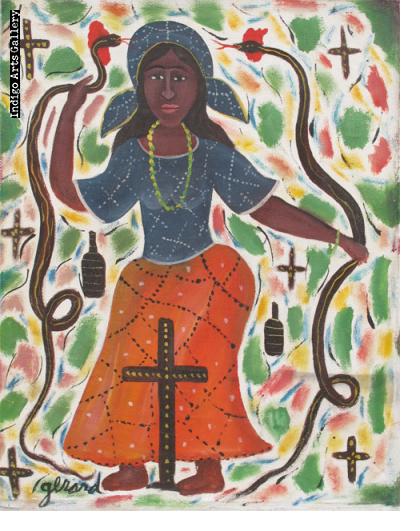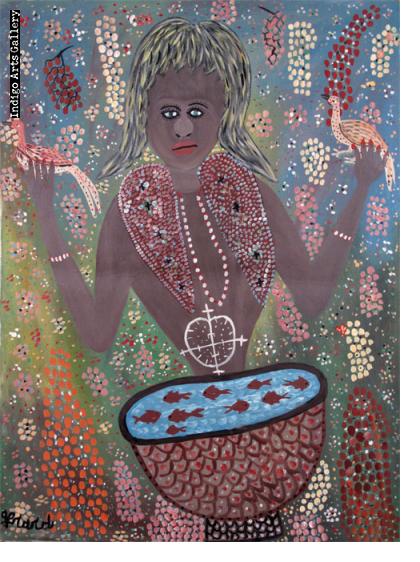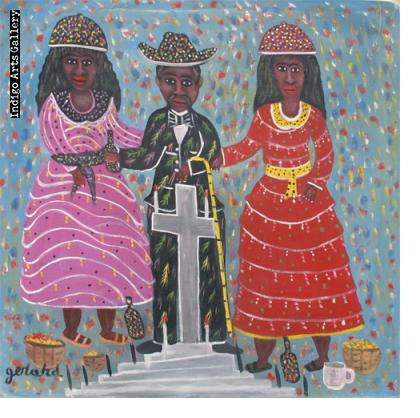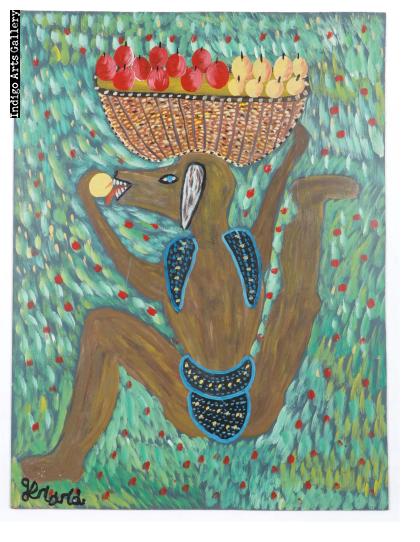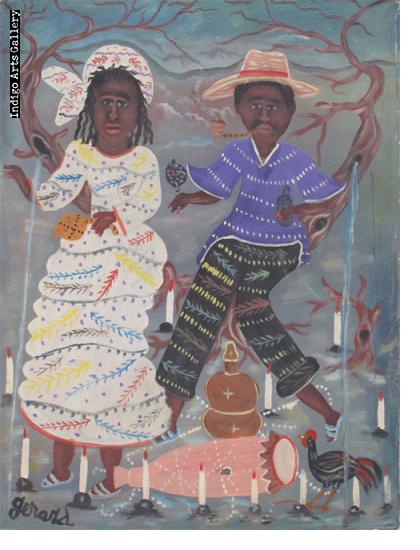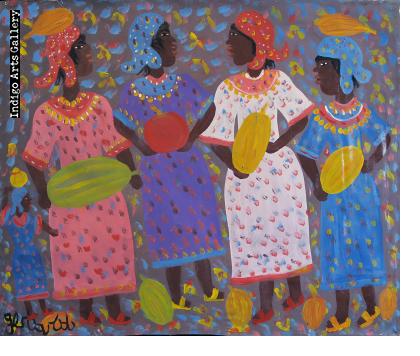
" Gérard was of those beings who make the impression of being eternal. Not because of his energy at his 84 years old but because he has always been in another world, flying over with lightness and the smile all the things of life from here. " Arnold Antonin
Nearly three years since his passing seems a good moment to celebrate the Art and life of Gérard Fortuné. One of Haiti's most prolific, wildly creative and beloved naif painters, Gerard passed away on December 8, 2019. His emergence as a painter has been much mythologized. In 1988 Selden Rodman wrote:
"There is nothing "pure", mystical, or restrained in the art of Gérard, whose very first pictures in the early eighties called to mind the frenzied embrace of nature, the fractured women, and the ferocious application of paint dear to that Expressionist par excellence, Chaim Soutine. It is assumed that Soutine acquired his nonconformist temper in the ghettos of Lithuania before coming to Paris. Gérard, a pastry cook for the haute cuisine of the elite in Petionville, may have acquired his more directly by fooling around with the plates of whipped cream, ladles of frosting, and tubes of candied glitter..." (Where Art is Joy 1988)
Gérard was born in Montagne Noire, above Petionville, Haiti, and spent the rest of his life in that vicinity. The date of his birth is uncertain. One biography lists it at 1933, another firmly at May 2nd, 1925, and his obituary by Le Centre d'Art lists it at 1924. He told me he did not know when he was born. His mother, Résinette Petit Frere, sold vegetables and his father Ti Soldat Fortuné, was in the police force. In the early 1970's Gérard found work in the home of a Frantz Gabriel, where he was a handyman, gardener and cook. It seems his cooking was particularly appreciated, and whether Rodman's pastry-cook story is true or not it definitely did influence his subsequent art. In an interview by Andreas Jorgensen, quoted in the Monnins' monograph, Gérard Fortuné, he said:
"Cooking is good for the stomach and painting is good for the eyes... The most important thing to me is the mixing of colors. I like to paint with colors, and I do a lot of these dots. I do the background very carefully too. And you have to be inspired, to take things from all around you and try to mix exactly what you are looking for: the next color, and the next color.
For me it's like cooking: when I cook I have all my spices around me; everything - the oranges, the spices - and it will taste good if you know how to mix. People like my cooking, and they like my painting too."
He began to supplement cooking with painting in the late seventies, painting in bright colors on recycled rice bags or whatever was at hand. It is said that "a Frenchman" bought his first painting, a small image of Jesus on the cross, and spread the word among the expatriate community. Before long he took his work to the gallery "emporium" of Issa el Saieh in Port-au-Prince. Issa bought it and encouraged him to paint more, buying the works as fast as Gerard could paint them. But Gerard refused to be restrained by exclusivity. He went on to sell his work to the galleries of Monnin, Nader, Carlos Jara, Bourbon-Lally and all of us visiting art enthusiasts who found our way up the hill and through the woods to his caille.
Visiting was an experience, because he lived in a patch of forest wedged between the high stone walls that protected les riches of Montagne Noire from the masses. Only the initiated knew that a short gap in the walls led to the plot of land that Gerard and his sister had somehow retained all these years. When I first visited in 1991 Gérard lived and painted in a small and rather dark one-room caille amidst banana trees and wandering chickens. I came away with a large canvas of a horned, winged, serpent-tailed goddess in a bright orange top on bright purple ground.
“God tells me what to paint, the feeling of each painting.” He says that God gives hope to him. “Inspiration comes from God at all hours, “ he says, and so sometimes he works all night. Anyone can come to see him working by candlelight when there is no electricity in the one-room home that he shares with a small cat. (Rebeca Schiller, Hand/Eye, 2014)
Gerard was known for his versatility and his sense of humor. He painted religious scenes, both Christian and voodoo, animals, birds, mermaids, angels, politicians, beautiful women and daily life. “I’m obligated to paint vodou and Jesus and flowers and the sea. And villages and anything that comes to mind.” (Rebeca Schiller). He depicted Papa Doc and his obese son Baby Doc, the "liberation-priest-president" Aristide and the recent playboy rockstar president Michel Martelly with equal wit. Rodman wrote: "To Gerard's irreverent spirit, nothing is sacred or terrifying. The devil stealing papayas from a tree is smoking a cigarette, and when he paints Damballa with his coiled tail he does not hesitate to put a cigarette in the mouth of the king loa too."
When I last visited Gerard, a few years after the 2010 earthquake, his old caille had been destroyed but he was living in a more spacious two room house built by USAID and US donors. Already it had been fully "Haitianized", the plywood walls painted a bright salmon, and decorated with paintings of a farmer and his wife, a black goat and many chickens.
During the earthquake, he said his tiny house shook. Walls outside toppled over. He ran out into the courtyard. Other family members living around the same courtyard ran out of their small houses as well. No one was hurt and the homes didn’t suffer too much damage. “That’s because I have a good heart. God protects me. It was the first time I saw a goudou goudou (the popular term for earthquake, meaning rumble-rumble) —and I thought it was the end of the world.” (Rebeca Schiller, Hand/Eye)
Gerard’s work has been exhibited internationally and is included in the permanent collections of Ramapo College, New Jersey, the Waterloo Center for the Arts in Iowa, the Huntington Museum of Art in West Virginia, the Patricia and Phillip Frost Art Museum in Miami and the Museum of Aquitaine in Bordeaux. His work is published in Where Art is Joy (Rodman, 1988), Dialogue du Réel et de L’imaginaire (1990), Masterpieces of Haitian Art (Russell, 2013) and Island on Fire (Demme, 1997), and the monograph, Gérard Fortuné (Monnin, 2014). Gérard was featured in the films: Dreamers of Jorgen Leth (2002) and Jambes de Bois or Gérard Fortuné, the last of the Naives by Arnold Antonin in (2015).

